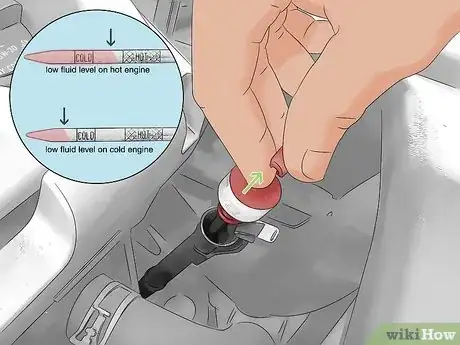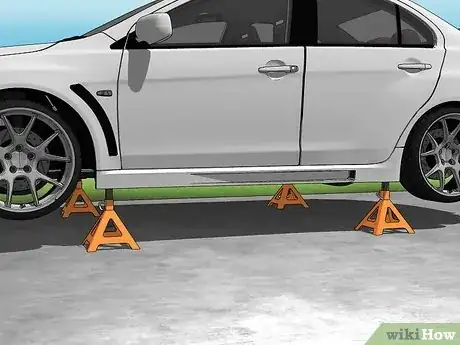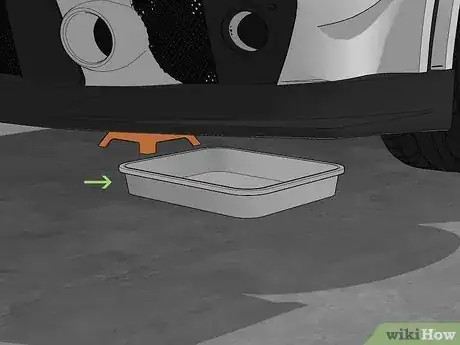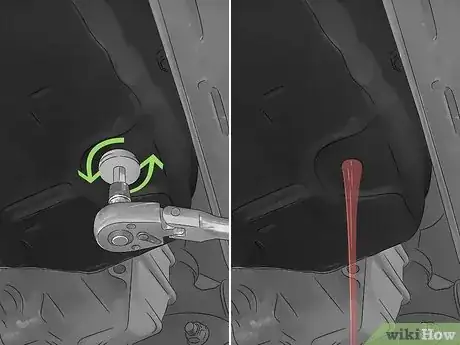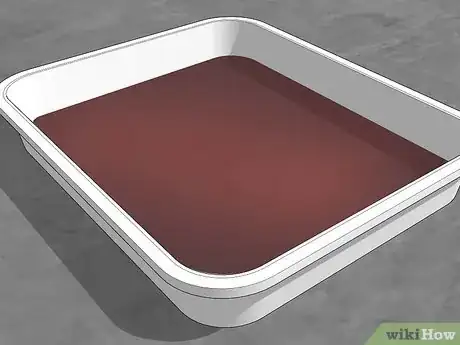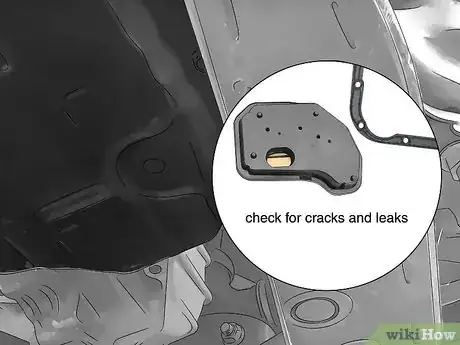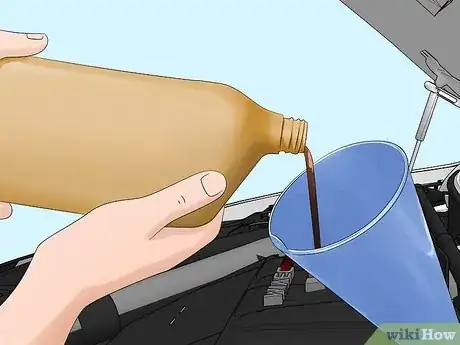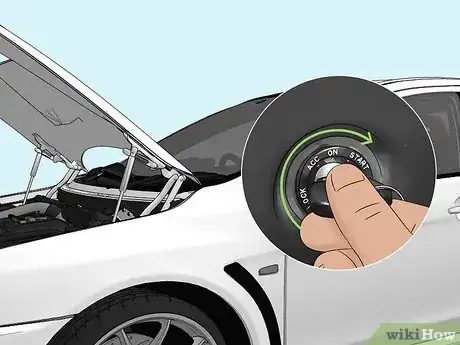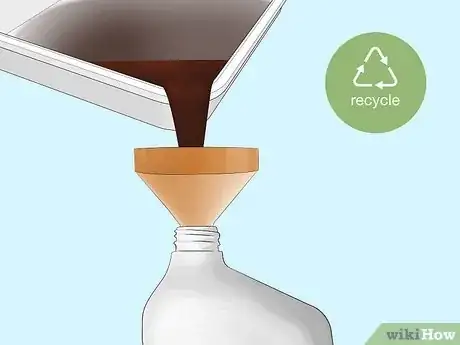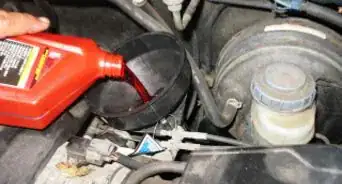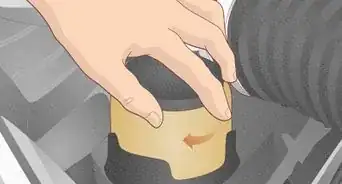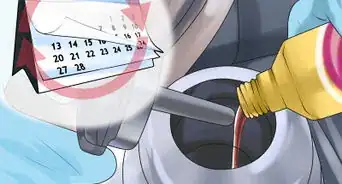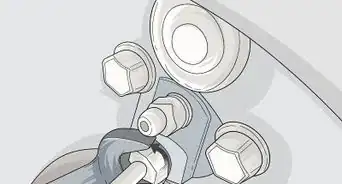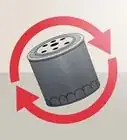This article was co-authored by Ed Beery. Ed Beery is an Automotive Specialist and the Owner of InTechgrity Automotive Excellence based in Denver, Colorado. With more than eight years of experience, he specializes in providing maintenance and repair services for both individuals and companies. Ed and the InTechgrity Automotive Excellence Team are approved by the American Automobile Association (AAA) for repairs and are Automotive Service Excellence (ASE) certified.
There are 8 references cited in this article, which can be found at the bottom of the page.
wikiHow marks an article as reader-approved once it receives enough positive feedback. In this case, several readers have written to tell us that this article was helpful to them, earning it our reader-approved status.
This article has been viewed 601,982 times.
Transmission fluid needs to be changed from time to time in order to extend the life of the transmission, usually every 30,000–60,000 miles (48,000–97,000 km) (sometimes more – check your owner's manual for service intervals). When the transmission fluid gets old, you might have trouble shifting, or your car may get sluggish or stall at stoplights. You can consult your owner's manual to find out how often you need to change your fluids, but you can also learn to diagnose and address the issue yourself.[1]
Steps
Getting Started
-
1Check the level of transmission fluid first using the dipstick.[2] Automatic transmission fluid (ATF) is the fluid used in vehicles with self-shifting or automatic transmissions. It's typically colored red or green to distinguish it from motor oil and other fluids in the vehicle. On most vehicles, you can check the level with a dipstick, while the engine is running.
- Look for the transmission fluid dipstick, which is usually red-handled. It should be labeled clearly and easy to access on most cars, close to the oil dipstick.[3] Dipsticks list a hot and cold reading. If your engine has not been run in about an hour and you do not live in an extremely hot climate refer to the Cold Reading for proper levels.
- If your levels are low, but the fluid looks clean, you might just top off the system.[4] If the fluid looks discolored or sludgy, you need to change it. If you're at the mileage marker that requires you to change your transmission fluid, you might just elect to change it anyway, even if the fluid looks good.
-
2Lift and support the vehicle with jack stands. Make sure you've got enough room to squeeze under the vehicle and that the jacks are supported securely.
- Always park on a flat, even surface when you're working under the car and use support stands, chucks, or other acceptable bracing to ensure safety should a jack fail or the vehicle attempt to roll off ramps.[5]
Advertisement -
3Locate the transmission fluid pan. The pan will be attached to the bottom of the transmission with six to eight bolts, so you'll have to crawl underneath the vehicle to locate it. For front-wheel drive vehicles, the transmission is typically situated left-to-right under the engine bay. For rear-wheeled vehicles, the transmission typically hangs under the center console area, facing front to rear.
- Examine the pan. In most vehicles, you'll be able to drain the transmission fluid by removing a drain plug in the center of the pan and letting the fluid drain out into a receptacle. On some vehicles, however, you might have to remove the transmission pan entirely. The fluid pan will have multiple smaller bolts around the border to hold the pan to the transmission, which you can unscrew and pull the pan free.
- If you want to inspect the fluid filter, gaskets, or any other components, you may want to remove the pan anyway to examine the assembly more thoroughly.
Draining the Fluid
-
1Place a collection pan under the drain hole. To catch the falling transmission fluid, you'll need a pan under the drain bolt big enough to catch it. Inexpensive plastic receptacles are available at most auto shops.[6]
- If your transmission lacks a drain plug, draining the fluid is potentially a very messy operation. Because the fluid will drain around the pan (rather than through a drain plug hole), you will need a collection pan at least as wide as the transmission pan itself if you don't want to make a mess.
-
2Drain the fluid. To drain the fluid, you'll either unscrew the drain bolt or remove the pan and the fluid will start draining immediately. It's likely that you'll get some fluid on your hands (it's almost impossible to avoid this), but you can make sure that you keep your face and chest out of the way to minimize the spillage. Place the receptacle under it, unscrew the plug, and pull it away and free quickly to get out of the way.[7]
- If the transmission pan has a drain plug, remove the plug to drain the fluid into a collection pan. Use a pan that can contain up to ten quarts of transmission fluid, although that much probably will not drain out.
- If you need to remove the entire transmission fluid pan, unscrew the two upper-most bolts halfway, then unscrew the other bolts all the way. As soon as the last bolt is completely unscrewed, the pan may drop a bit and fluid will begin draining. You may also have to pull it loose using some force.
-
3Examine the fluid that drains out. Most automatic transmission pans have a magnet inside to collect metal shavings that have been produced by worn moving parts. Remove these shavings along with the remaining fluid in the pan. Metal shavings are normal and represent the typical wear and tear of the gears. Any large or odd-shaped chunks however are not normal. Keep these pieces and seek the advice of a certified mechanic to ensure the transmission is not in need of immediate attention.
- About 50 percent of the fluid will remain in the transmission when you drain it. To remove all the fluid, including the fluid in the torque converter, you must flush the transmission completely, a process that is usually part of a more comprehensive maintenance routine.
Replacing the Fluid
-
1Evaluate the transmission fluid filter and gaskets. While you're changing the fluid, it's a good idea to inspect and evaluate the status of the filter and gaskets and replace them if necessary. They won't need to be replaced every time, but cracked or leaky filters and gaskets need to be removed and replaced with identical parts, which you can purchase at an auto supply store. To find out which replacements you'll need for your model, visit the store and talk to a technician.
- If you do this, or if you elect not to, replace the plug and the pan assembly, tightening with a socket or torque wrench. Don't over tighten the bolts.
-
2Add new transmission fluid.[8] Once the pan is back on the vehicle, you can take the car down off the jack stands and replace the transmission fluid with the appropriate variety.There are different kinds of transmission fluid, so you want to make sure to use the kind recommended by the car manufacturer. Check your owner's manual to add the correct variety of fluid.
- On most vehicles, you'll add the transmission fluid through the port from which you removed the dipstick. The new fluid goes directly into this spout, in most cases. You will need to use a funnel. Pour in a little less fluid than drained out so as not to overfill. You can find out the proper amounts in your owner's manual.[9]
-
3Start the car and allow it to run for a few minutes. Check the fluid level. If the level is low, add more fluid. Repeat until the transmission fluid is at the right level. Avoid overfilling. Some transmissions require the fluid be checked in neutral and others in park. The wrong amount of fluid will be added if not in correct position. The dip stick and owners manual will indicate correct position.
-
4Dispose of the fluid properly. Transmission fluid is harmful for the environment, and it's important that you avoid draining or dumping transmission fluids into the environment. Always wear gloves and wash your skin of any residue immediately after completing the change of fluids.
- Most auto parts stores and body shops will have fluid recycling programs that allow you to drop off your motor oils, transmission fluids, and other vehicle fluids that you collect when maintaining your vehicle. Find a drop-off site in your area.
Warnings
- Manual transmissions require a whole different procedure for changing transmission oil. The above wikiHow is for automatic transmissions.⧼thumbs_response⧽
- Changing the transmission fluid can extend the life of your transmission even if the fluid is still red when you check it by pulling out the dip stick. If the fluid is dark red or brown and smells burned, you should flush the transmission completely. There may be significant damage to the transmission.⧼thumbs_response⧽
References
- ↑ https://www.cartalk.com/content/service-your-car-14
- ↑ Ed Beery. Automotive Specialist. Expert Interview. 19 November 2021.
- ↑ https://www.lubricants.total.com/how-check-transmission-fluid-level
- ↑ Ed Beery. Automotive Specialist. Expert Interview. 19 November 2021.
- ↑ https://www.floorjackshop.com/how-to-jack-up-a-car-in-8-steps/
- ↑ https://www.aceable.com/car-maintenance/transmission-fluid-change/
- ↑ https://mobiloil.com/en/article/car-maintenance/advanced-car-maintenance-tips/how-to-change-transmission-fluid-and-filter
- ↑ Ed Beery. Automotive Specialist. Expert Interview. 19 November 2021.
- ↑ https://www.cars.com/auto-repair/diy/transmission-fluid-change/
- Videos provided by Easy Steps
About This Article
Transmission fluid lubricates the components inside your vehicle's transmission, and you may need to change the fluid out if your gears aren't shifting correctly or there's rattling under the hood. Transmission fluid usually needs to be changed out every 30,000-60,000 miles (48,280-96,560 km). To change your vehicle's transmission fluid, first park your vehicle on a flat surface and raise each side up with jack stands or a ramp. Find the transmission fluid pan by looking for a flat metal plate in the middle of the vehicle with a fingertip-sized nut on it. Place a large bucket under this nut to catch the transmission fluid that drains out. Use a socket wrench or hex key to loosen this bolt and slide it out to empty the old fluid. Wear gloves and old clothes in case any transmission fluid spills on you. Once the fluid stops dripping, reattach the nut and tighten it with your socket wrench or hex key. Pour the old fluid into empty quart or liter bottles to figure out how much transmission fluid you need to put back in your vehicle. Check the owner's manual for your vehicle to determine what type of transmission fluid you need. Next, pop the hood of the vehicle and remove the dipstick from the transmission line. Finally, insert a funnel into the transmission line and pour your new fluid into it. Check the dipstick when you’re done to make sure you don’t need to add any more fluid.
